The first couple weeks of March have brought a spate of disturbing climate change results. Humans are clever problem solvers and exceptional toolmakers. It's crucial for our species to prepare for what's ahead by lowering carbon emissions and future-proofing towns and cities worldwide.
Let's look at some of this new information and then examine its impacts specifically on three important and lucrative world commodities.
On March 5 NOAAs team measuring greenhouse gases near a volcano in Mauna Loa, Hawaii announced a dramatic jump of 2.67 parts per million in carbon dioxide from 2011 to 2012, signaling the world's economy revving-up by burning more fossil fuels - especially in China. It was the second highest jump in carbon dioxide next to 2.93 parts per million in 1998, since the inception of continuous measurements from 1959.
On March 9 China's environment ministry told attorney Dong Zhengwei that he couldn't have access to two-year old data on soil pollution because it was a 'state secret.' The air pollution is unimaginably brutal in cities like Beijing and Chinese scientists now believe that the soils are dying. For a country with a population of 1.4 billion people (and the largest honey producer on the globe) that's frightening news.
And much of that toxic air pollution is generated from coal-fired power plants, which each year emit at least 4,000 metric tons of mercury vapor into the atmosphere. Mercury vapor is a deadly neuro-toxin, mostly winding up in the Arctic, contaminating the marine and freshwater food chains including biomagnifying its way into humans that consume it.
On March 12 observations from NASA satellites confirmed that the mass of glaciers in the Canadian Arctic has plummeted. The ongoing loss of 590 gigatons of ice (or the equivalent volume of 4.72 billion blue whales) from 2004 to 2011 is accelerating and scientists predict it's irreversible. Cornell and Rutgers researchers have clearly shown the link between severe loss of summertime Arctic sea ice and resultant southerly meandering polar jet stream, which amplified Superstorm Sandy (2012) driving it into the densely populated New York City area.
Burning more carbon-based fuels is significantly adding more energy and moisture into the atmosphere, which is now forcing climate zones in the Northern Hemisphere to shift rapidly as they are migrating north by 36 feet a day or 2.4 miles a year, according to scientists at the Botanical Gardens in Dublin.
Droughts, heat-waves, rising temperatures, intense and prolonged summer rainfalls and missing sea ice are threatening global food security.
In the United States climate change has brutalized plants and honeybees. In fact, since 2008 the price of honey in America has risen by 50 percent. Pundits expect it to reach its highest price ever in 2013.
Honey production in Spain, the world's 12th largest producer was off by 70 percent in 2012 due to a searing drought. Continuous summer rains prevented plants from flowering in Britain during the summer of 2012, in turn causing honey production to tumble by 72 percent.
Higher temperatures, longer droughts and more intense rainfalls have brought coffee producers around the globe more resilient pests i.e. coffee berry borer and higher incidences of plant disease i.e. coffee rust. Furthermore, intense water stress associated with vicious droughts in southern Sudan are driving wild coffee plants to extinction, now predicted to occur by 2020.
Coffee beans are the second most globally traded commodity next to oil. The flavorsome Arabica beans account for 70 percent of all coffee consumed, they are highly susceptible to all the symptoms of a warming world. Already, India has seen its coffee production fall by over 30 percent from 2002-2011. And, by the way, from 2010 to 2011 Maxwell House, Yaban and Folgers increased their coffee price by 25 percent while Starbucks increased its coffee price by almost 20 percent in 2011. Researchers from UKs Royal Botanical Kew Gardens predict that as much as 99.7 percent of Arabica growing areas will become unsuitable for coffee plants as temperatures continue to rise in the coming decades.
Chocolate comes from the tropical cacao tree's cantaloupe-sized bean pods. Cocoa is the powder made from roasted and ground cacao seeds.
West Africa produces greater than 40 percent of the world's cocoa. Since 2000 droughts around the globe have caused the price of cocoa to double. At the current insatiable global rate of burning fossil fuels, temperatures across the cacao growing African regions over the next decade will rise by another 1.8 F. Hundreds of thousands of small-scale cacao farmers in Ghana, Cote d'Ivoire and elsewhere will be force out of business and the price of cocoa will become a luxury good.
Climate change is disrupting our lives and impinging upon global food security e.g. honey, coffee, chocolate.
The science is in: The carbon storing capacity of Earth's forests could be lost entirely if the planet heats up 4.5 F above pre-industrial levels, leaving an uninhabitable world for seven plus billion people. In order to prevent our planet from reaching this fateful 4.5 F threshold; it's time to power down by lowering carbon emissions beginning now, not in a decade.
Earth Dr Reese Halter is a broadcaster, biologist and author of The Insatiable Bark Beetle.
